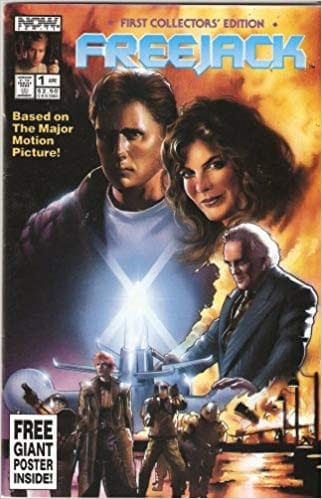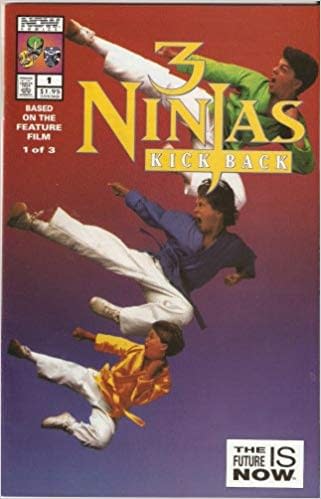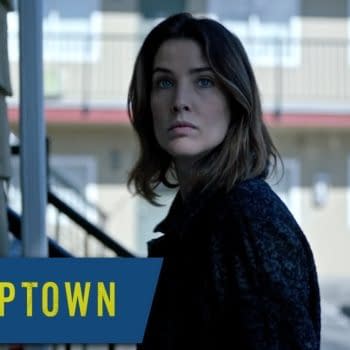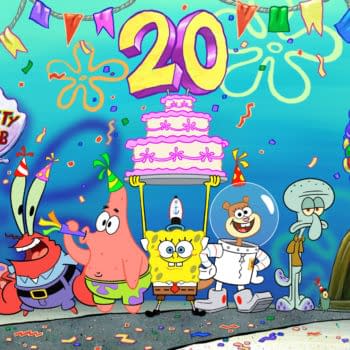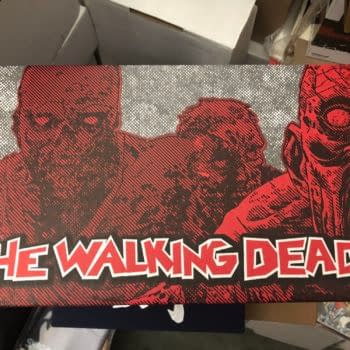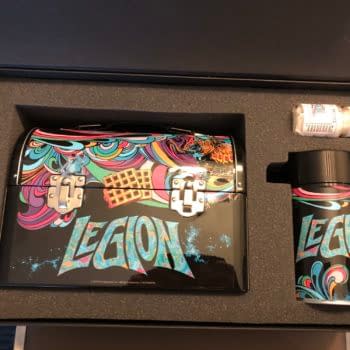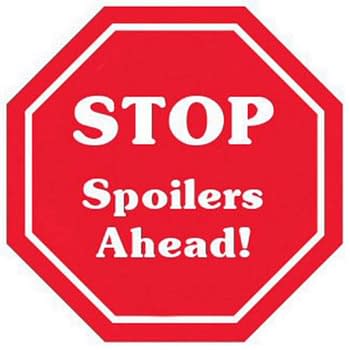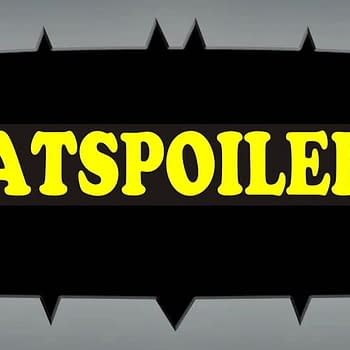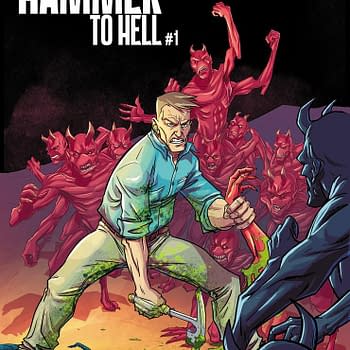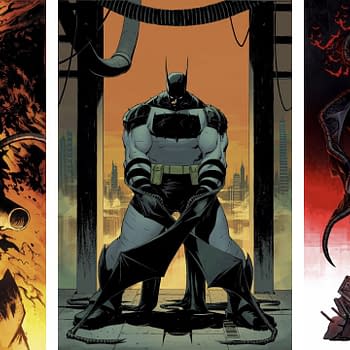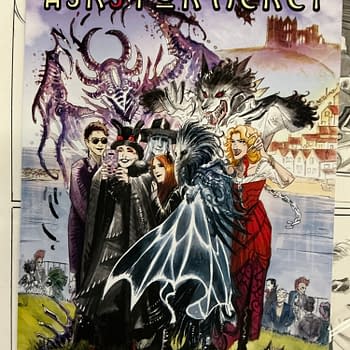Posted in: Comics, Recent Updates | Tagged: bestseller, Carey Pietsch, dungeons and dragons, Gerblins, McElroy, new york times, podcast, The Adventure Zone
New York Times #1 Bestselling Authors and Artist SDCC Interview: The Adventure Zone: Here There Be Gerblins
I have been listening to The Adventure Zone (TAZ) podcast since close to the beginning, so when they announced they would be doing a graphic novel I was very excited. Turns out I wasn't the only excited about this, as The Adventure Zone: Here There Be Gerblins debuted this last week at #1 on The New York Times paperback trade fiction best-sellers list. It is also the first graphic novel to ever be #1 on this list. Based on the first TAZ arc and written by the stars and creators of TAZ, Clint McElroy, Griffin McElroy, Justin McElroy, Travis McElroy, with art and co-adaptation by Carey Pietsch, and released by First Second Books. I was lucky enough to be able to sit down at SDCC 2018 and interview Clint, Travis, and Carey.
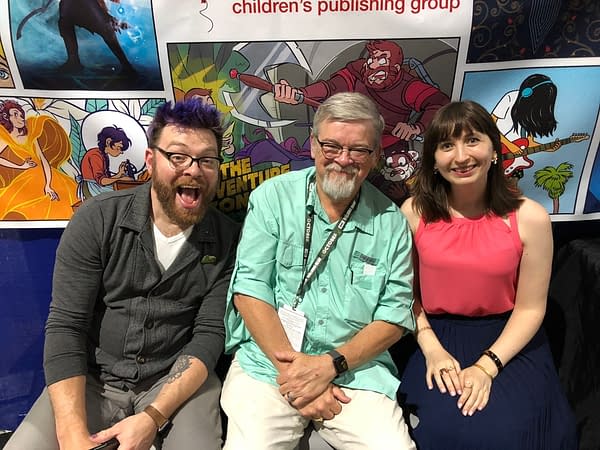
Joshua Stone: I've listened to all the TAZ and I'm a MaxFunDrive member, so I was really excited to hear about this book, which came on Monday, since I pre-ordered it. What made you decide to do the book?
Travis McElroy: There's a couple of different threads that all tied together at the same time. One was the literary agent for the graphic novel, Charlie.
Clint McElroy: Charlie Olsen
TM: Charlie Olsen, he reached out to us and said, "Hey, I think this would be a good graphic novel." And we were like, "Ok." Two, Carey Pietsch has been doing art on her won, and worked on The Adventure Zine with Megan Raley and so there was a book form of TAZ. And I also think, from the beginning there's been such a strong support from the art community, so there's always been non-canon, I kept wanting to say 'fanon', you know fan canon of like TAZ and what it looks like and the art and everything. So I think those three things came together as like yes, why haven't we done this already, this makes perfect sense. Especially once we met with Carey and brought her on board and started collaborating with her, it was like this was the most why didn't we do this 3 years ago kind of feeling.
CM: Because nobody cares. No, that's not true.
TM: I also don't know that we were working on it yet. So that probably would have put a damper on it.
CM: I came from a lifetime of comic book reading and collecting
Carey Pietsch: and writing.
CM: and writing. And unfortunately for them, I forced them to read comics, and they loved them. So it was just a kind of natural transition.
JS: I do the same thing to my kids. I've been collecting since I was 13.
CM: There was always a comic book in the stocking, even to this day.
TM: I will say, one of the most proud I've been of the graphic novel is the morning before I left to do the tour, I was sitting flipping through it and my 20 month old daughter pulled it out of my hands and started flipping through it. And I said, "Is it good?" And she said, "Yeah", and I was like gulp. I also the other day showed her the My Brother, My Brother, and Me tv show and she was laughing her face off and like she doesn't get it, but on screen is daddy and Uncle Justin and Uncle Griffin and Peeps and stuff and she was dying. But watching her flip through the book and actually look at it, it was a really nice moment.
JS: (To Clint) This says (pointing to the adapted by credit on the book) you did most of the writing,
CM: Well, no, I took the transcript and turned it into a script which then everyone else chimed in on. To portray it as me doing all the writing is not entirely accurate. I basically was the first level of adaptation along with Carey. We were basically the co-adapters. That's a fair way to put it?
CP: Yeah, but all four of you really were so deeply involved at every step of the process, so it wasn't the case where you guys sat down and handed over a script and then vanished. Far from it. At every stage, Travis and Justin and Griffin and Clint would weigh in on not just here's how this page could be a little bit. Here's how the overarching arc of the story can be incorporated a little bit more deeply and thoroughly into this first one, but also down to the last detail of like what exactly would Magnus say after having successfully cut this Gerblin in half? What's the exact phrasing on this because Travis is Magnus' voice, Clint is Merle's voice, Justin is Taako's voice, and Griffin really is all the NPCs (non-player characters). So having them so deeply involved to be able to give the kind of thought, care, and consideration to small details like that is what I really think makes this book sing.
TM: I really enjoyed the Magnus knuckle hair conversation we had at one point, where I was like I think he would be hairier.
CP: Yes, it's very important. We got to talk about his chest hair for Book 2, that comes up.
TM: Yes!
JS: So along those lines, going through the transcript, how hard was it to decide what to use and not use when so much of TAZ is improv?
CM: We had some big decisions to make. If you listen to the podcast, it's four knuckleheads attempting to play Dungeons & Dragons, and the story just kind of evolved through Griffin's wonderful plot and story and plot lines. Even though we were improving it, we were acting and we were creating and trying to be honest to some kind of character. So I think our big discussions were how do we even phrase this? How do we even tell this story? Once we decided to really concentrate on Merle, Magnus, Taako, and the Dungeon Master instead of Travis, Justin, Griffin, and Clint, that really helped it lock into focus. When we were doing most of the work on this we were wrapping up the "Balance" arc, and so we really kind of had a better feel for our characters. We still didn't know where the story was going because we never know because Griffin never tells us anything in advance, but it think that once we figured that this is the story that has touched people that was kind of the way we ran with it. I think once we made the decision, that made it a lot easier.
TM: We were very careful in the process to find a balance between staying faithful to the podcast, but making the graphic novel feel like a unique individual, like this is what the story would have been if it started as a graphic novel. So anything that didn't work, this is so weird and meta, it didn't work because it wouldn't have been in the graphic novel first. There was some stuff, where it was like, there's a better version of this joke to be told here in the visual form rather than using the same line from the show and making the reference to our own show, let's instead make this a unique joke that works better in visual form.
CP: I think as both of you have said, the few places where things didn't end up in the book was because you were all working so hard to keep the tone and feeling of the podcast intact in this separate medium, I think all of you have said before that we were able to add more than we had to cut.
CM: It was more addition than there was subtraction. Obviously things that were very obvious audio jokes, some of those we couldn't save, but Corey's artwork saved so many jokes. It's like Griffin has said in other sessions, you can't do celebrity imitations in a graphic novel. That was a very small fraction of things that didn't make it into the story. It really was not too much omission, it was really addition because so much of the story that took time for Griffin to describe and setup, the appearance, the settings, the props, or whatever, Carey did visually, Carey did in the panels. So that allowed us to really concentrate on the dialogue and the jokes. She even handled the reaction shots on the character's faces.
JS: I'm through the first three chapters, and the humor is definitely there, it comes across, but for me TAZ isn't always the humor, it's the other pieces that sometimes I was trying not to have anyone look into my car when the tears rolled down my face, because that happened. It happened because I cared about the characters and I think that's a successful story, when you care about the characters. How do you think you're going to be able to still deliver that feeling as the book goes along? And maybe it happens in the book, I know there's some really bad things that happen in that first arc at the end, so that can certainly be emotional.
CM: It actually does come across. We have talked about this. The end of the book has more resonance, has more emotional resonance. People have to understand, when we did the first few episodes, it was a lark. We were goofing off, having a good time, never imaging in our wildest fantasies it was going to become so important to people and so precious to people. And even through most of the Geblins arc we were footloose and fancy free and doing whatever the hell we wanted to do. When we wrote this we were 80% done wth "Balance" and we kind of knew what was important to people. It wasn't so much a change, it was an interpretation.
TM: We knew where to shine the light a little bit more. This is a moment that resonates, so we can take a second longer and spend it with this. We have the well moment that you'll get to, the well, not like oh well, a pit with water in it, you know what a well is. That moment, we spend a little more time on it in the book than we did in the podcast. It's kind of interesting revisionist memory when people think about it, cause they're like I love the jokes and everything, but it's the heart of TAZ, but that evolved over time.
JS: Yes, absolutely.
TM: I think if we tried to do it too much in the first book, someone would pick it up and be like, this doesn't work, because you didn't see them go from goobers to actually caring and trying cause we as players and Griffin as the DM went from just having fun to being invested in it. So I think we really tried to keep that feeling too, instead of jump straight to let's chock it full of heart.
CP: Clint has talked before about one of the surprising challenges, and you should probably say this in your own words, but not leaning too hard into the found family that these characters are by the end of the "Balance" series.
CM: It was a real temptation for them to be buddy buddy, To be honest with you, they just kept screwing with each other and they were downright nasty to each other, because in the moment they were strangers and we kind of had to resist. There were moments we said they sure talked mean to each other, but we didn't want to back off that because that friendship is going to have to be earned. It starts paying off in this book. You start to see that happening. It's a little more honest than if we start off with being buddy buddy from the get go.
JS: I did a little research, so I have to ask you Clint, how useful was your experience adapting Freejack and Universal Soldier when it came to adapting the podcast?
CM: Well, my experience adapting 3 Ninjas Kick Back was really influential.
JS: I didn't see that one, Freejack though, Mick Jagger and
CM: Anthony Hopkins, come on.
JS: and the coach of The Mighty Ducks.
CM: It was so weird, because those are adaptations, but it's funny cause when I adapted those the movies were not out and I didn't get like a screener or anything. What I got was a script and a bunch of pictures, with my hand to god. So try to imagine that there's a scene in Universal Soldier in a grocery store and they have a big fight and one of them gets tossed into a meat freezer and that's how they slow him dow and so I'm having to imagine that from whole cloth. This was a little bit easier cause I had the podcast I could always refer back to and put those responsible into effect. To answer your question, I learned a lot about the form and how to write comics. I've learned a heck of a lot more writing this graphic novel.
TM: Much like in the show, adding competent women and it made it much better.
CM: Carey and our wonderful editor, Calista Brill, have taught me a whole lot. I had a lot of the basic concepts, but things like building on a page and ending on a page turner and finding the right balance of that, that's something I really learned from them and I'm still learning from them,
JS: Thank you all very much. I love the podcast, I like the new stories. I can't wait to see where we go on this journey you guys are taking us on. How many books do you think you will do?
CM: At least two.
TM: In the back of the book it does say coming soon.
JS: Are you looking to do a book for each arc?
TM: As long as people keep supporting it.
CM: Yes, oh that's good. Very authorish.
JS: With your fans, I don't think you'll have a problem with that. They come out to see you live.
TM: I hope so. I didn't want to take for granted that people buy this book because they like us. We wanted to make a really good book, that people like the book In and of itself, so like that's the thing, I want people to buy it because they like the book. . But I find it very satisfying, so I think we would lIke to keep doing more.
CM & CP: Yes.
JS: Thank you.
So the book is out, and already a bestseller and having finished reading it since I conducted this interview I can wholeheartedly recommend the book to those who have listened to the podcast and those who have never listened before. I would also recommend the podcast to anyone who likes fun, so most of you.
For further musings from Joshua Stone, you can follow him on the Twitter @1NerdyOne


